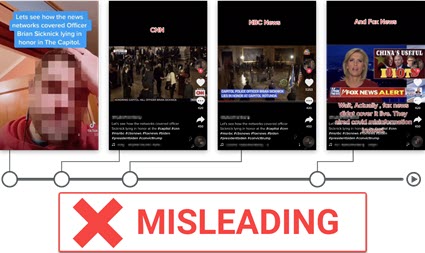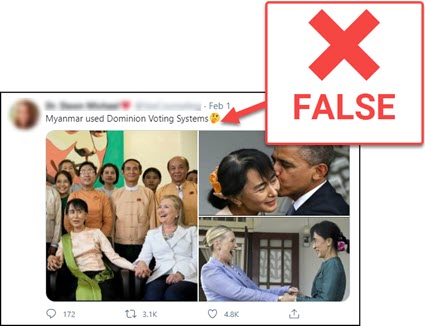The Sift: Does tech owe journalism? | Double mask rumor | Marty Baron interview
Subscribe to the free weekly educator newsletter The Sift.
|
|
Teach news literacy this week |
|
|
Local newspapers versus tech giants A West Virginia-based newspaper publisher, HD Media, has filed a federal antitrust lawsuit against Google and Facebook, contending the tech giants are unfairly dominating the digital advertising market and putting the journalism industry at risk. Editor & Publisher, which first reported on the suit filed on Jan. 29, called the case the “first-of-its-kind.”
|
 |
|
Viral rumor rundown  NO: Georgia Republican Rep. Marjorie Taylor Greene did not say “If English was good enough for Jesus, it’s good enough for us.” YES: This quote has been used to deride various public officials since at least 1976. YES: A version of the quote also appears in this Los Angeles Times report from 1970.  NO: Fox News did not fail to cover Brian Sicknick, the U.S. Capitol Police officer who died following the Jan. 6 insurrection, lying in honor in the Rotunda. NO: The news clips in this TikTok video do not all show coverage from the same date and time. YES: Fox News was criticized for devoting significantly less time than the other networks to President Joe Biden and first lady Jill Biden paying their respects to Sicknick late in the evening on Feb. 2. YES: Fox News carried a live feed of the memorial ceremony for Sicknick on Feb. 3 for about 24 minutes — from approximately 10:30 a.m. ET until about 10:54 a.m. ET — during America’s Newsroom hosted by Bill Hemmer and Dana Perino.  NO: Dominion Voting Systems machines were not used in Myanmar’s November 2020 election. YES: Voters in Myanmar vote via paper ballot. YES: The democratically elected government in Myanmar was overthrown in a coup on Feb. 1 after leaders and supporters of the military — which used to rule the country — falsely claimed that the election was fraudulent.  NO: There is not only one airplane that is called Air Force One. YES: The “Air Force One” call sign is used for any airplane with the president of the United States on board. YES: There are smaller planes — like the C-32 model that President Joe Biden took to Delaware on Feb. 5 — in the fleet that the Air Force uses to transport the president. YES: The two planes most commonly referred to as “Air Force One” are based on the Boeing 747 airframe, like the one pictured at the top of this meme. YES: As Snopes reported, former President Donald Trump also used the C-32 as Air Force One.  NO: The Centers for Disease Control and Prevention (CDC) did not issue an order “demanding” that people wear two masks. YES: The CDC on Jan. 29 issued an order requiring passengers and operators of public transportation to wear a mask “made with two or more layers of a breathable fabric that is tightly woven” starting on Feb. 2. NO: The recommendation to ensure that cloth masks have multiple layers of fabric is not new and was made earlier in the pandemic. |
A: The short answer: It can be tough to decide which stories to cover! Sporting events, government meetings, breaking news, story tips from sources — so many developments compete for journalists’ attention. News organizations can’t cover everything, not only because they have limited time, resources and space in publications and broadcasts, but also because, well, most of what happens every day isn’t “newsworthy”! So journalists have to rely on something called “news judgment” to decide how newsworthy something is. Newsworthiness determines what issues and events get covered — and how prominently. It is generally based on how timely, important, interesting and unique a story is. |
|
★ Sift Picks Featured “Marty Baron Considers His Time at the Washington Post” (Isaac Chotiner, The New Yorker). Quick Picks “TikTok Is Adding a Potential Misinformation Warning Label to Save Us From Ourselves” (Whitney Kimball, Gizmodo).
“Journalist identities hijacked to spread fake news” (Sara Fischer, Axios).
“Student journalists at an HBCU campus newspaper took on racist local media—and won” (Alexis Wray, Scalawag).
|
|
What else did we find this week? Here's our list. |
|
Thanks for reading! Your weekly issue of The Sift is created by Peter Adams (@PeterD_Adams), Suzannah Gonzales and Hannah Covington (@HannahCov) of the News Literacy Project. It is edited by NLP’s Mary Kane (@marykkane). |
|

